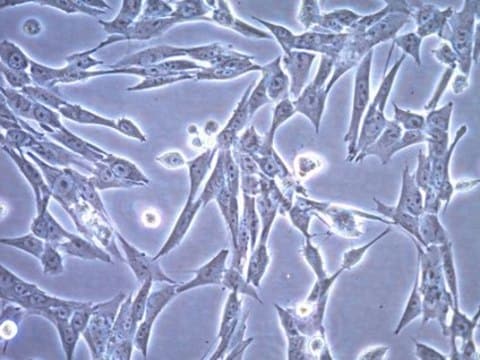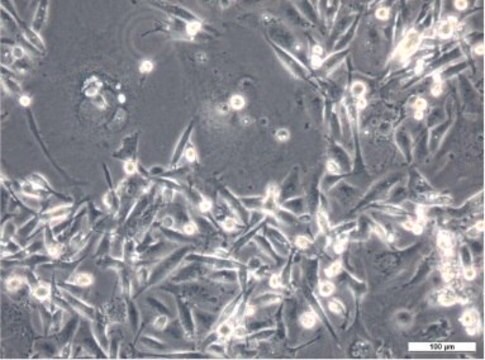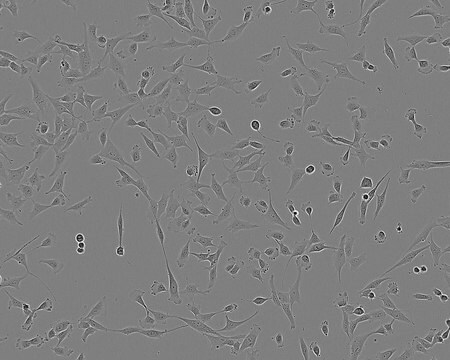08061901
U-373 MG (Uppsala) cell line
Sinonimo/i:
U-373MG Cells, U373-MG Cells, U373MG Cells
About This Item
Prodotti consigliati
Origine biologica
human brain
Livello qualitativo
Stato
liquid
Modalità di accrescimento
Adherent
Cariotipo
2n = 46
Morfologia
Pleomorphic/astrocytoid
Recettori
PDGFR alpha and EGFR. See Nistér M. et al., (1988) & (1991)
tecniche
cell culture | mammalian: suitable
Malattie correlate
cancer
Condizioni di spedizione
dry ice
Temperatura di conservazione
−196°C
Origine della linea cellulare
Descrizione della linea cellulare
Background to the identity query for the cell line U-373 MG: The American Type Culture Collection (ATCC) reported that their stock of U-373 MG had been shown to have differing genetic properties to stock from the originator′s laboratory, and to share similarities with another glioblastoma cell line, U-251. In light of this, ECACC undertook an investigation into the authenticity of its own stock of the U-373 MG cell line. ECACC found similar results to the ATCC i.e. the stock held as U-373 MG was found to be identical by STR-PCR profiling to U-251. The U-373 MG cell line listed under catalogue number 89081403 has been re-named as ′U-251 (formerly known as U-373 MG)′.
Applicazioni
Azioni biochim/fisiol
Profilo DNA
CSF1PO: 11,12
D13S317: 8
D16S539: 12,13
D5S818: 12
D7S820: 8.2,12
THO1: 7,9.3
TPOX: 8
vWA: 17,18
Terreno di coltura
Mantenimento delle subcolture
Altre note
Cultures from HPA Culture Collections and supplied by Sigma are for research purposes only. Enquiries regarding the commercial use of a cell line are referred to the depositor of the cell line. Some cell lines have additional special release conditions such as the requirement for a material transfer agreement to be completed by the potential recipient prior to the supply of the cell line. Please view the Terms & Conditions of Supply for more information.
Esclusione di responsabilità
Codice della classe di stoccaggio
10 - Combustible liquids
Classe di pericolosità dell'acqua (WGK)
WGK 3
Punto d’infiammabilità (°F)
Not applicable
Punto d’infiammabilità (°C)
Not applicable
Scegli una delle versioni più recenti:
Certificati d'analisi (COA)
Ci dispiace, ma al momento non ci sono COA disponibili online per questo prodotto.
Se ti serve aiuto, non esitare a contattarci Servizio Clienti
Possiedi già questo prodotto?
I documenti relativi ai prodotti acquistati recentemente sono disponibili nell’Archivio dei documenti.
Il team dei nostri ricercatori vanta grande esperienza in tutte le aree della ricerca quali Life Science, scienza dei materiali, sintesi chimica, cromatografia, discipline analitiche, ecc..
Contatta l'Assistenza Tecnica.




